We are back to exploring new working realities, working alongside professionals in the electrical sector. We find them on site, at the edge of the stage before performances, but also in everyday life contexts, on routine maintenance to the electrical systems of companies and condominiums. So let’s discover dielectric shoes! But first, a bit of history.
Electricity was already discovered and studied by the ancient Greeks, but it was only with the first experiments in the nineteenth century that it began to become part of our daily lives, with all the doubts of sceptics and with all the risks of the trade.
Today, we can look back on many clear steps forward, especially in the area of security. And it is precisely about dielectric PPE (personal protective equipment) that we want to talk to you today. That is, all those mandatory accessories that professionals use to avoid the risk of electrocution.
Dielectric PPE for electricians
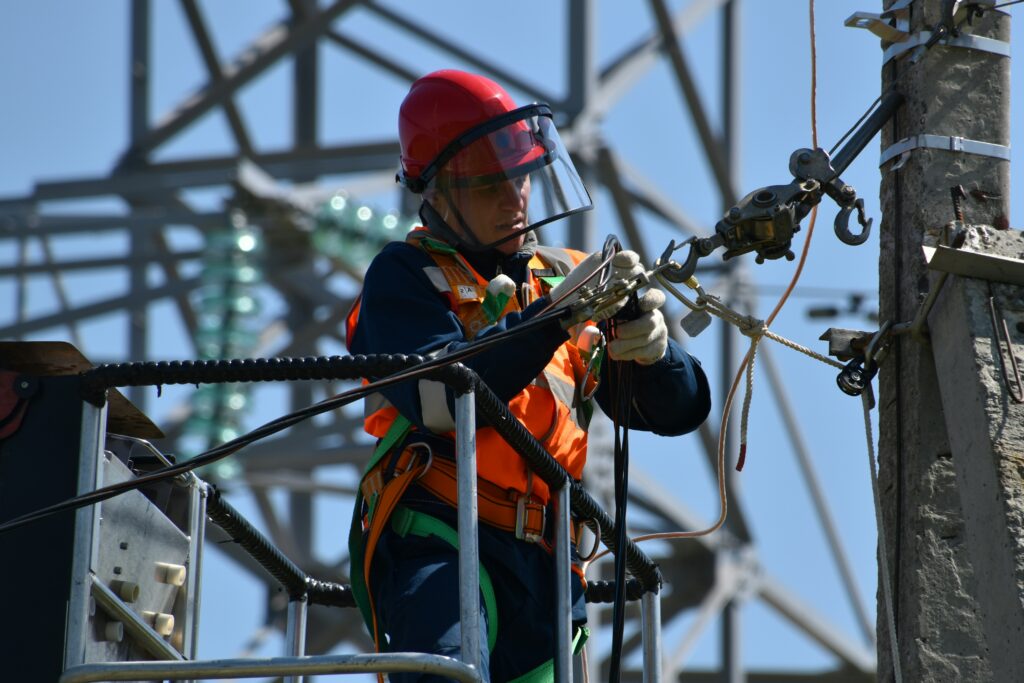
Working closely with electricity comes with a number of risks, whether it’s low-voltage systems or electrostatic discharge. Dielectric PPE is used to ensure the safety of workers.
Accessories and equipment made of insulating materials and totally free of metal parts are categorized. In this way, even when in contact with objects that could trigger a discharge, the PPE dissipates it to the ground, protecting the person who is working.
The optimal conditions for dielectric insulation include a total lack of water or moisture. But since it is very difficult to find them on a normal construction site or in outdoor work environments, we limit ourselves to advising you to keep the PPE available in good condition. A small tampering or careless wear and tear is enough for the device to completely lose its function and risk no longer being functional for the safety of the worker. But let’s see them together.
Dielectric Shoes
First of all, let’s start with the paragraph in which we are going to talk about shoes for electricians. As with other PPE, dielectric shoes do not have metal parts or other materials that can act as conductors for electricity. Their primary function is to connect the professional’s body to the ground and ensure that any electrical voltage is discharged to the ground in a controlled manner, reducing the risks to the person.
There are several models on the market. From the simplest yellow boots or ankle boots, to a design not unlike normal safety shoes.
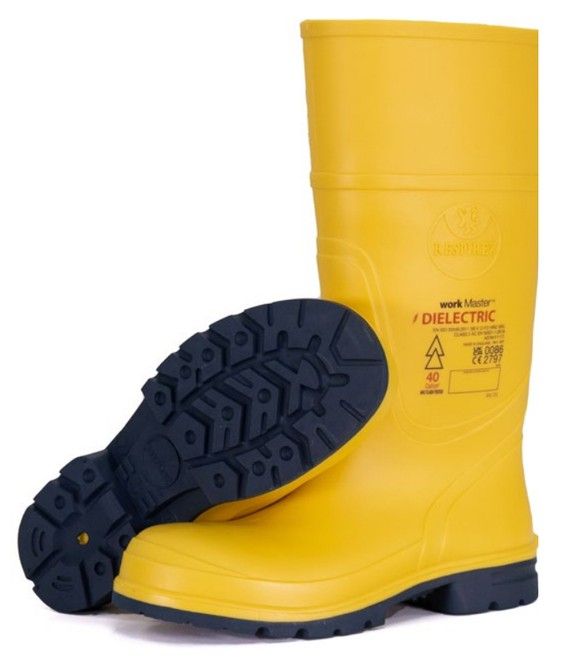
Photo credit: canevari.it
- Comfort
Having to wear them all day, every day, they can’t be uncomfortable. I need to give support to the foot and heel to reduce full-body fatigue and prevent stress injuries;
- Dielectric Materials
As we have already seen, they must not have metals or other conductive materials. They should only be made of materials that offer good electrical resistance;
- Reinforced Toe
Obviously not metallic, but being safety shoes, they cannot avoid having protective parts against impacts or crushing of the foot. Composite or steel drill bits are often used for these parts;
- Non-slip sole
Being the first insulating barrier, they must be made of rubber, to protect the foot from a possible passage of electric current. In addition, a good grip is essential to prevent slipping. And good resistance prevents the shoe from being punctured by pointed or sharp objects, reducing or completely invalidating its protective function;
- Thermal Insulation
Temperatures that are too high or too low could cause problems during operations. Not to mention that electricity can generate overheating, which is why a shoe must be able to thermally insulate the foot.
As we have seen, there are several models to choose from, both depending on the design and the purpose of use. Each shoe can also be categorized according to the degree of protection it offers. In the identification codes of accident footwear, dielectric shoes are always identified with the letter S, followed by a number from 1 to 5 for the basic models, or by a B if equipped with a rigid toe cap.
Dielectric Gloves
Now let’s move on to the protective device that most comes into contact with electrical systems. In fact, the hands are the part of the body most at risk for an electrician. With them he moves, moves and connects cables and coils, constantly risking to get shocks. To avoid this, it is necessary to use gloves that protect the skin and body of the professional from direct contact with electricity.
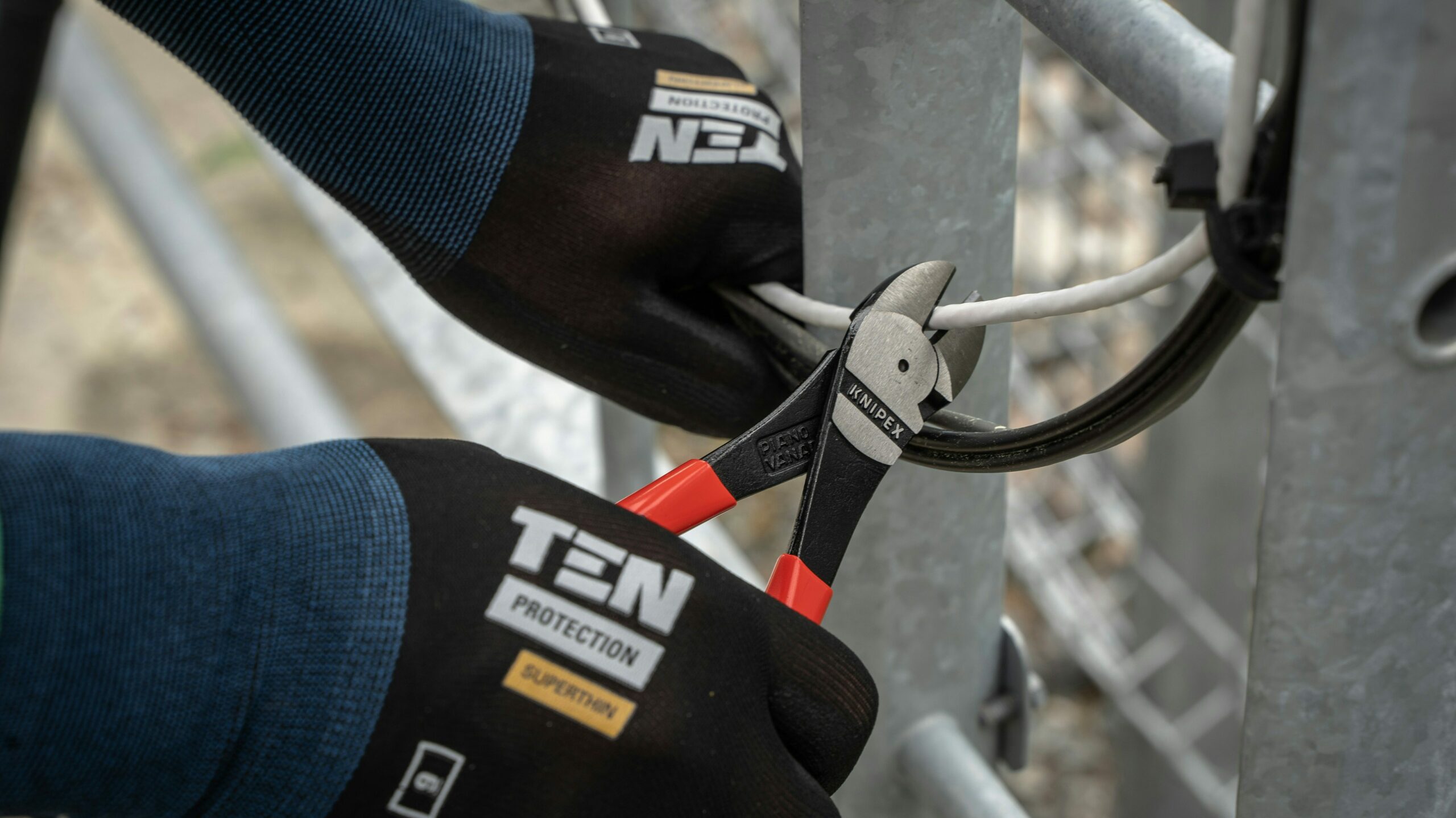
Photo credit: Jimmy Nilsson Masth | Unsplash
There are five types of gloves, which classify the degree of protection. From Class 00, which withstands a maximum voltage of 500V, to Class 3 which protects up to a maximum voltage of 26500V. The correct glove must be chosen, of course, based on the work that will be done.
Dielectric Helmets
As you can imagine, they protect the garment from shocks and, above all, from direct contact with live parts of the electrical system. Many helmets are also tested to withstand sub-zero temperatures, so they can be functional even during outdoor interventions even in the coldest months.
Despite the basic features, which include a total lack of conductive materials and head insulation, there are several models to choose from. Some are equipped with a visor, fixed or retractable. Others, on the other hand, have integrated accessories, such as an anti-sweat front panel and chin guard, to be used even for work at height.
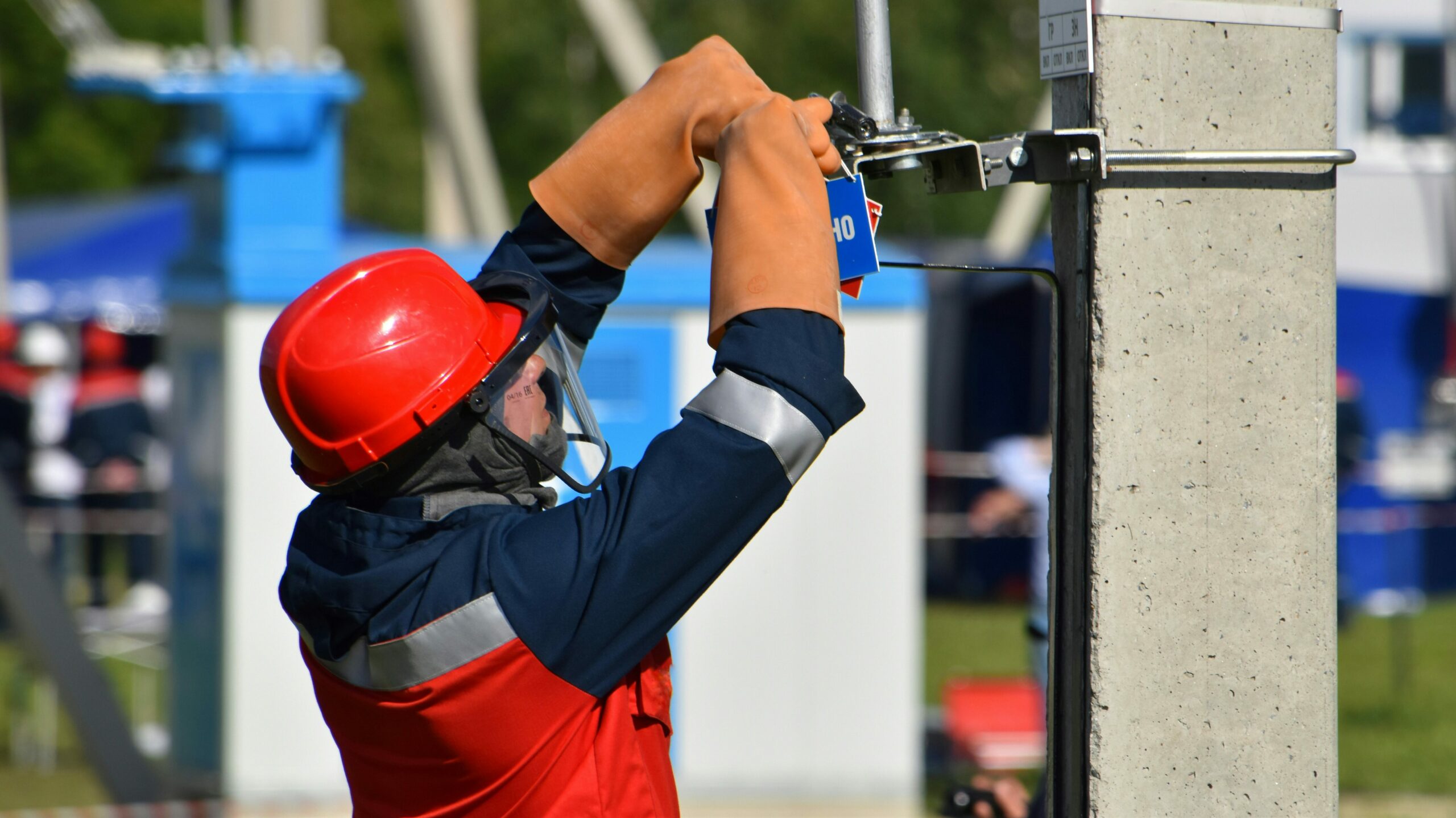
Photo credit: Антон Дмитриев | Unsplash
Dielectric Clothing
Just like gloves, dielectric workwear also varies depending on the type of work to be done. There are several models on the market that can be used for work at height or for normal maintenance work on electrical systems. For the former, an ergonomic design with more flexible joints will be preferred, while for the latter there will be more specific protections against electric arc.
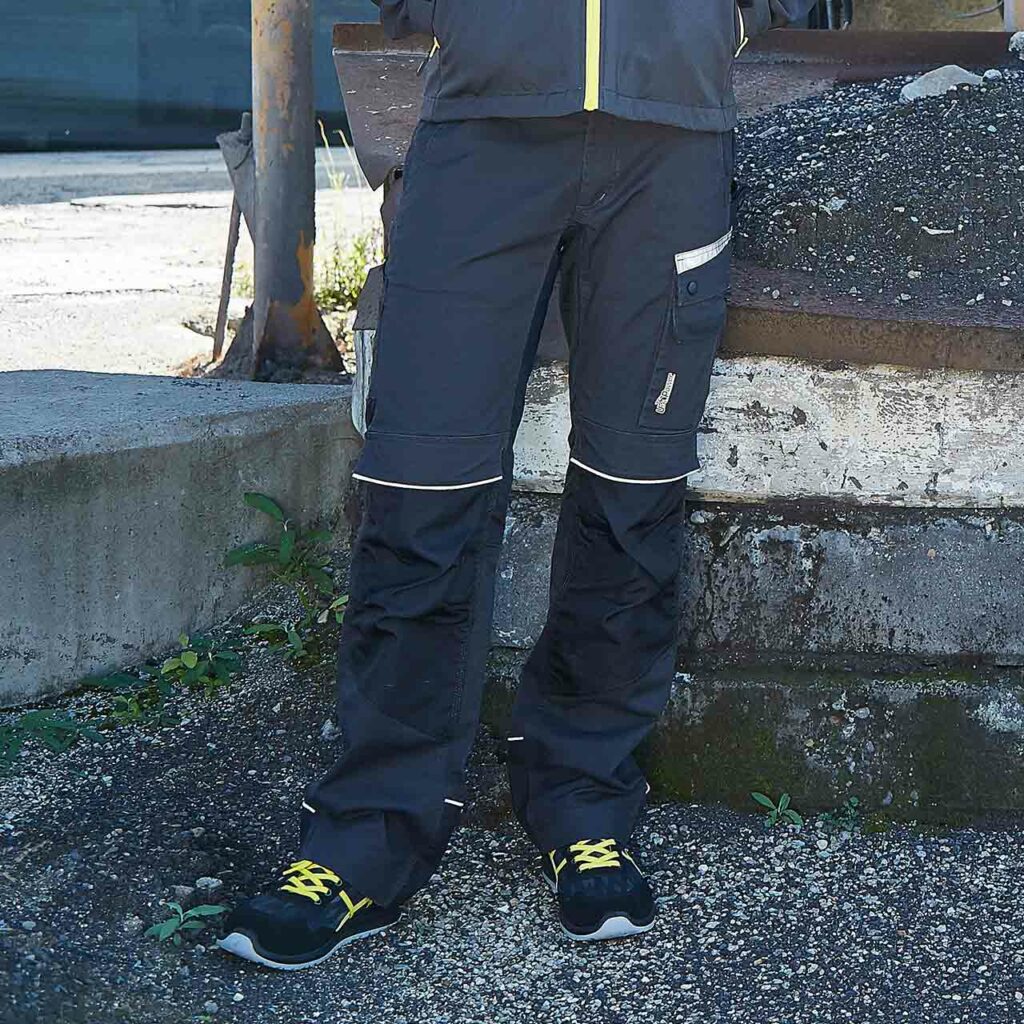
Photo credit: U-power.it
You can choose between insulating and flame-retardant one-piece suits, for total body protection. Or you can opt for single pieces, such as normal trousers or a model equipped with suspenders for greater grip and comfort in the long run.
There are also other garments that are both dielectric and flame retardant, such as jackets and shirts. To be combined, of course, with the other PPE that we have already had the opportunity to know.
Other Dielectric PPE
The wide range of dielectric PPE does not stop only at clothing, but also includes various accessories that are not always necessary to carry out work on electrical systems. Let’s talk, for example, about dielectric glasses. They are also built without metal parts, but with a light and robust design for prolonged use over time.
Other PPE, on the other hand, is not designed for the exclusive use of electricians, but can still be a great help to professionals in the sector. Such as, for example, earplugs that soundproof the ear from loud and constant noises. Dust masks, very useful in case of construction work or in closed environments and with little ventilation. And also fall arrest harnesses, especially for work at height, which protect against the risk of unintentional falls from great and small heights.
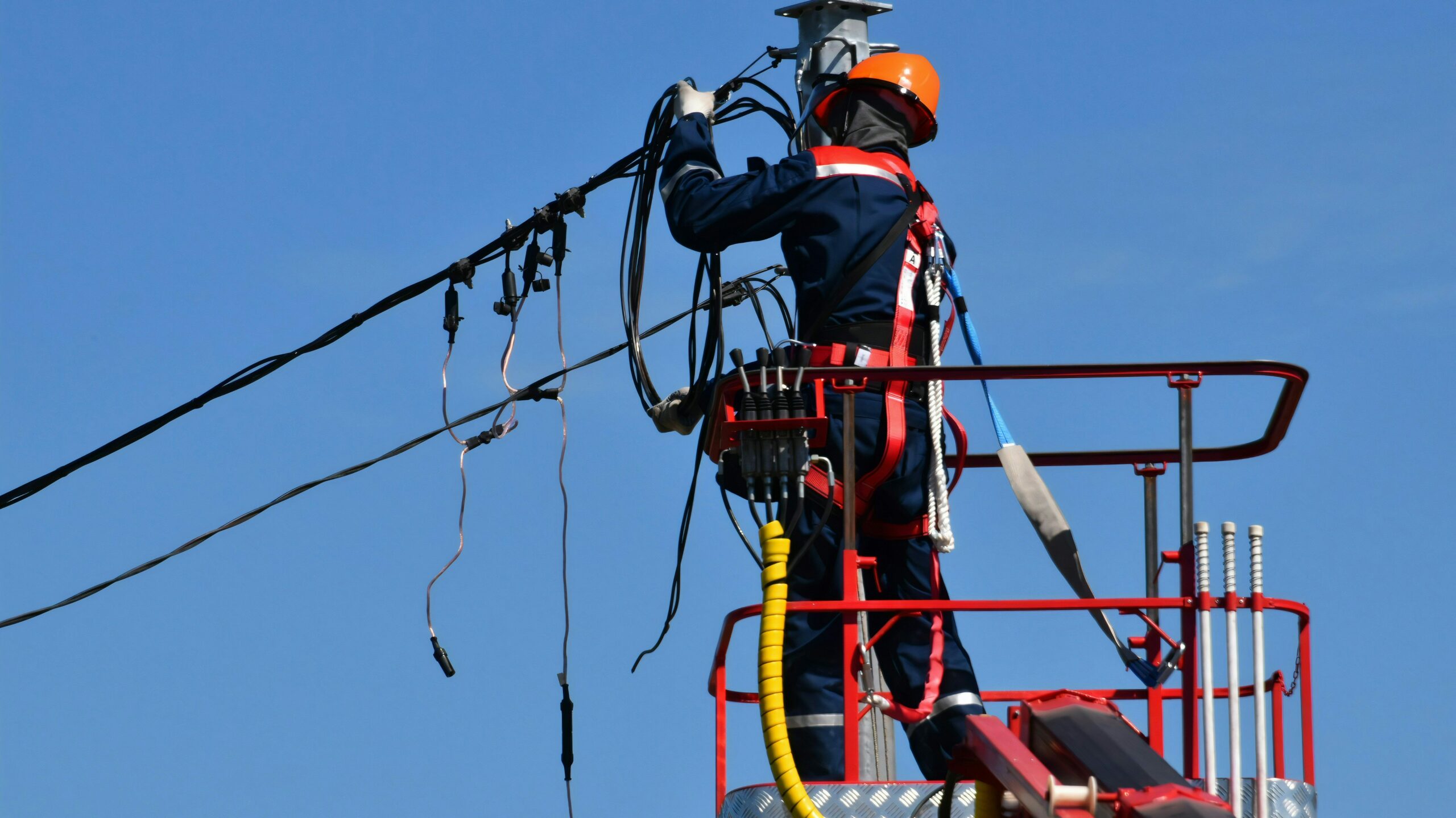
Photo credit: Антон Дмитриев | Unsplash
In short, even today an article based on safety at work that has allowed us to take a peek into the daily life of electricians. Did you know this type of PPE?
You may also be interested in the following articles:
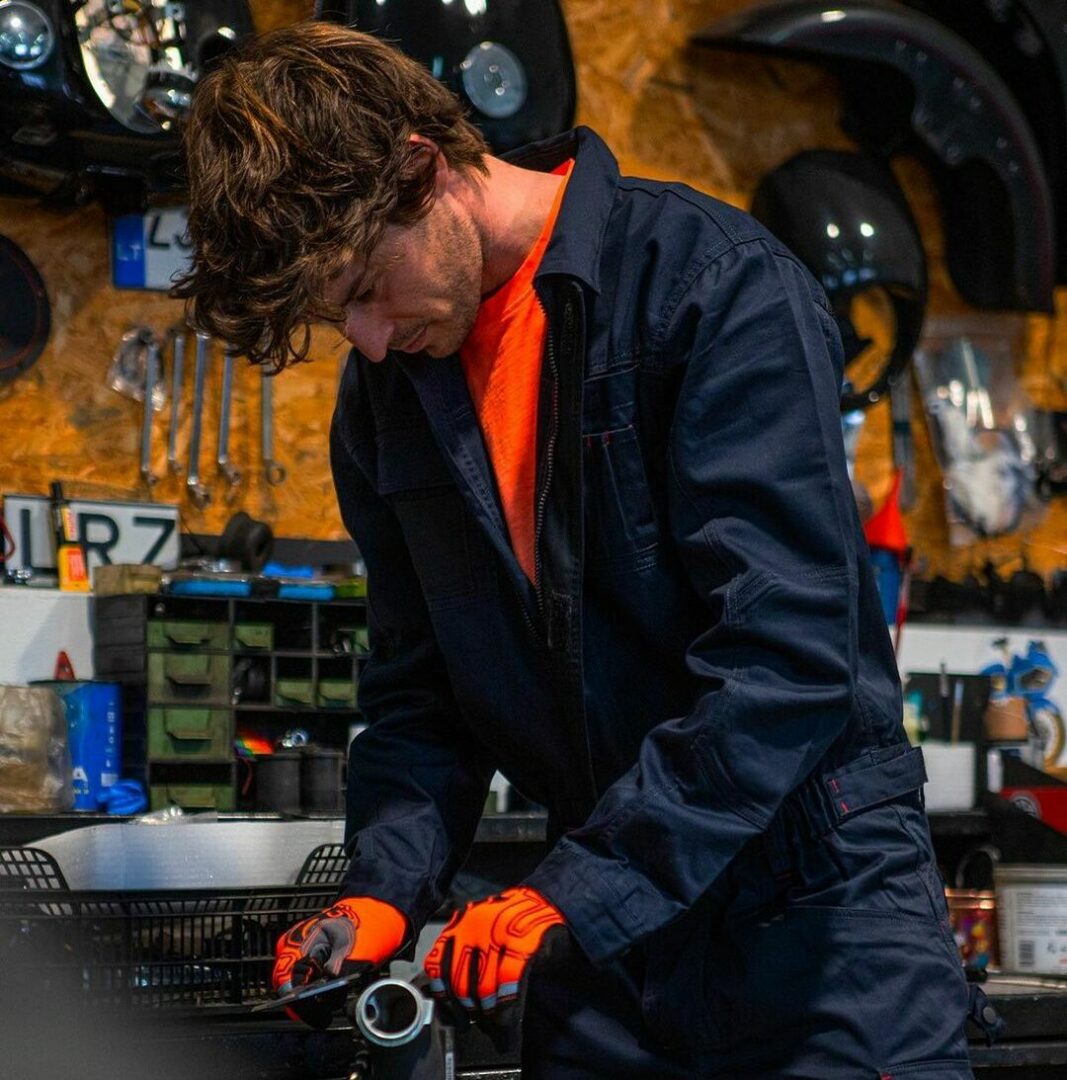
U-Power: safety footwear in step with contemporary fashion
U-Power’s incredible story in the context of the “workwear” trend: a limitless influence of style and materials in workwear

FOOTWEAR FOR FARMERS: comfort, safety and resistance are the three fundamental pillars
From the choice of footwear to the importance of socks: how to protect your feet in all outdoor working conditions

Safety footwear focuses on comfort and sustainability
Many innovations were presented at the A+A fair in Dusseldorf, from ultra-light or hyper-comfortable soles to environmentally conscious production systems.













































